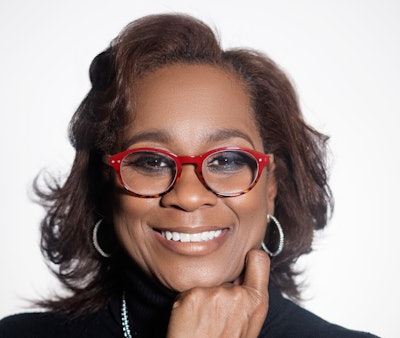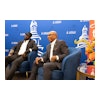The COVID-19 coronavirus pandemic has highlighted the need for historically Black colleges and universities (HBCUs) to build on their shared history of resilience to create new ways of educating students, develop new business relationships, and generate new sources of revenue.
Prior to the pandemic, natural disasters (Hurricanes Katrina, Sandy and Michael and severe winter storms), and cyber attacks had already revealed institutional vulnerabilities, limited capacity, and a lack of systems redundancy within Minority Serving Institutions (MSI), particularly HBCUs. The coronavirus pandemic has compounded these and other challenges that these institutions face, including inadequate funding and resources, under-capacity technology systems, and aged physical infrastructure. Further, these events illuminate the struggle of HBCUs to continue to respond, mitigate and recover in the face of ongoing risks and crises.
Previous major and catastrophic disasters have provided valuable lessons and elevated opportunities available to HBCUs, such as:
 Dr. Ceeon D. Quiett Smith
Dr. Ceeon D. Quiett Smith- Funding processes require documentation and can move slowly. In the early days of the crisis, colleges and universities (Incident Command System) or Emergency Teams should begin capturing information that outlines additional costs for compensation of extended work-time, expenses incurred beyond ‘normal’ operations, and the like.
- The Stafford Act presents opportunities to collaborate with local and state officials. The Robert T. Stafford Disaster Relief and Emergency Act is designed to coordinate a federal response and assistance for state and local governments in their efforts to provide aid and relief to impacted citizens. In doing so, the Stafford Act also presents grant funding opportunities that can and likely will be made available for disaster planning to address mitigation efforts (see sections 201 and 404 of the Stafford Act, 2019). This is an opportunity for research and planning contributions to be made by faculty.
- There are other areas that also present opportunities to lobby for an expanded definition of private facilities and to include language that describes the need for technology support (even replacement needs) and the importance of digital environments (section 101).
Even while addressing these immediate concerns, the ability to look ahead to design the new normal of campus – physical assets, admissions/enrollment strategies, development activities, online instruction, etc. are critical. In the response phases of Hurricanes Katrina and Rita, city and parish governments had to operate “two governments” – one to continue to manage the extended response and recovery (infrastructure, funding, etc.) and the other to establish a new normal of government operations as the cities and parishes repopulated.
Institutions advance from crisis response when they can recover and build a sustainable, and above all, resilient organization or community. Resilient responses to crisis reflect the capacity of individuals, groups, or entities for creativity and innovation. The recovery efforts following the BP oil spill provides an example. In fact, days before the Macando 252 (2010) oil well was capped, a small team, understanding that “businesses as usual” would not be adequate going forward, worked to design and implement the “next” BP. These efforts became the Gulf Coast Recovery Operation or GCRO.
I applaud the efforts of the Benedict College Risk Management team, now a modified ICS structure activated to navigate the issues related to the coronavirus. This team, not only manages the crisis in front of us, but actively and strategically looks ahead to the future of Benedict College. The capacity to respond to a crisis in a manner like the aforementioned GCRO, represents a scenario in which an organization has access to the resources and funding necessary to build resilience within a system. Risk and Crisis literature finds that an organizations capacity to innovatively respond (resilience) to a crisis can be significantly diminished or eradicated when groups lack resources and are, therefore, unable to act. Most HBCUs do not operate within resource-rich environments thus impacting the ability to build resilient systems.
Within the academy, the dialectic regarding innovation and enterprise positions them as opportunities to transform curricula and learning experiences, as well as to create alternative sources of revenue that can fortify these institutions, especially when they are faced with crisis. Given this, conversations about risk and resilience are necessary and must be prioritized within higher education. HBCUs, as a sector, historically have not been at the forefront of this conversation. This is a missed opportunity for HBCUs and higher education as a whole. As institutions that emerged from the crisis following the Civil War to produce the majority of scholars and professionals of color in the country, HBCUs can offer invaluable insights regarding resilience. Specifically, we would do well to study the types of innovations that George Washington Carver developed and implemented while serving as head of the Department of Agriculture at Alabama’s Tuskegee Institute (now Tuskegee University) in the early 20th Century.
Carver’s mission is the mission of HBCUs (and one that no threat should alter): to provide quality education for men and women who are underrepresented, under-resourced and often counted-out. When the entire economy of the South was threatened by a crisis among Southern farmers, Carver developed innovative farming techniques that created economic sustainability, not only for Southern farmers, but also for the South and the country. Carver’s methods created resilience that protected and prepared farmers for harsh summer conditions for generations, forever changing the industry and the world. As part of his focus on helping farmers, Carver went out into the community to educate farmers, essentially creating traveling schools focused on teaching new farming methods. Carver rearranged the classroom! His innovative rearrangement was so productive that it led to the question, “what do we do with all these peanuts and sweet potatoes?” That answer rescued the Southern economy and revitalized the American economy of the 1930s. Generations later, the world continues to reap the benefits of Carver’s academic and community collaborations.
What lessons can we learn from this? Today’s HBCUs should look to Carver’s model and again rearrange the classroom. COVID-19 has mandated some classroom rearrangement; institutions that had been slow to move to online instruction have had to immediately do so out of necessity. Yet, the opportunity and need to rearrange the classroom extends beyond the physical configurations into other areas. HBCUs are often located in under-resourced neighborhoods and surrounded by small businesses and churches. HBCUs can further rearrange the classroom by partnering with these institutions, as well as technology companies and private and philanthropic organizations, to not only expand learning experiences, but create business partnerships, thereby creating alternate sources of revenue and innovative opportunities to fortify these communities throughout the country.
A step forward for HBCUs can be the January announcement by the U.S. Dept. of the Treasury, led by the Office of Small & Disadvantaged Business Utilization, to allow HBCUs to participate in federal contracting. To consider this and other opportunities, the time is now for HBCUs to closely examine current and potential assets and partnerships, and it is critically important that we do so. This is the innovation that is needed for resilience from this crisis. In essence, what are HBCUs’ “peanuts and sweet potatoes” today?
Dr. s is the chief of staff at Benedict College.



















